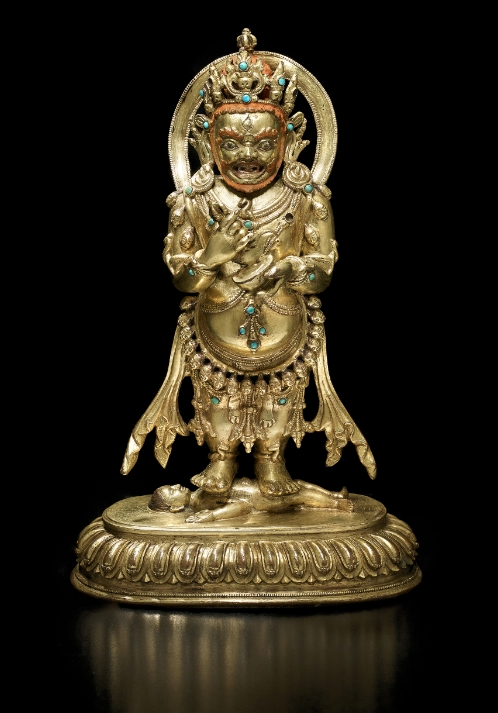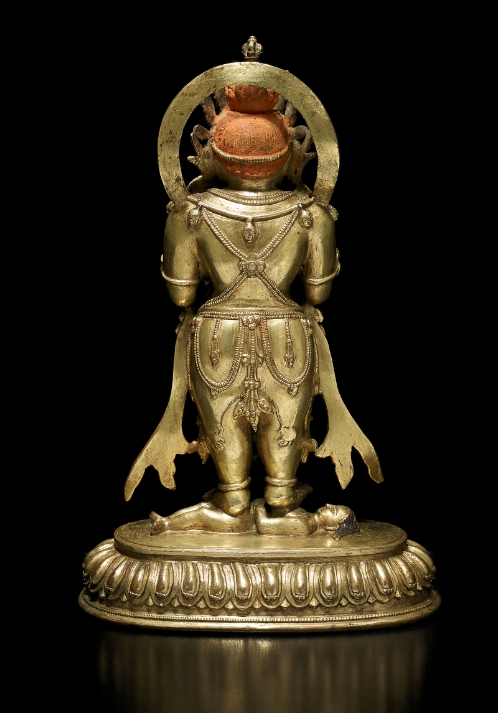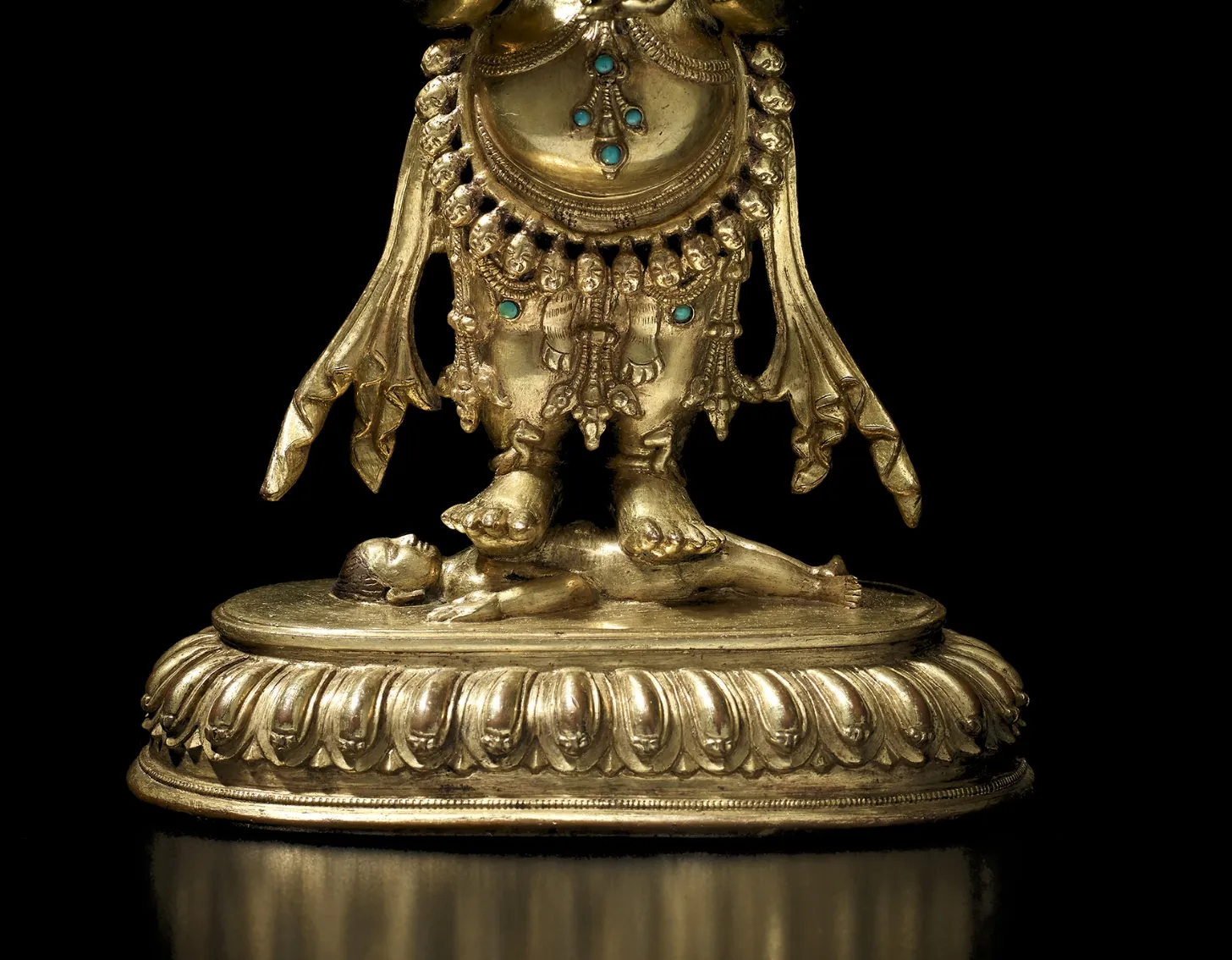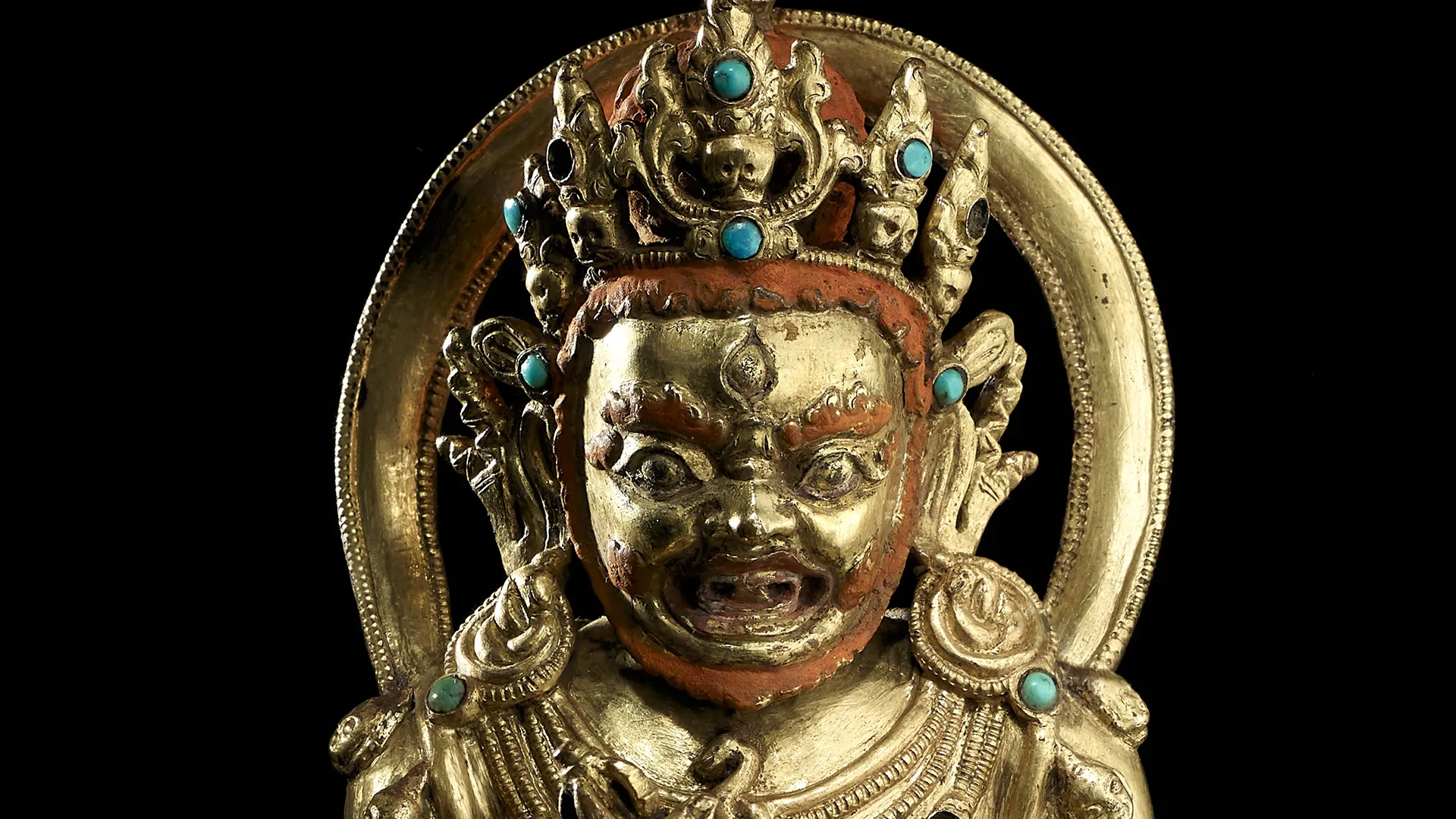A two-armed figure of Mahakala presents the god standing on a corpse, holding a skullcup and chopper (kartrika) (cat. no. 17). Like the previous example, pigment is used to highlight the hair, eyebrows, beard, eyes, and mouth. The style of the finely cast figure compares closely with works of the fifteenth century.
A similar form of the deity was popular during the Yuan period (1290-1368) and served as the Yuan state protector, under rites established by Tibetan hierarch Phakpa, who was Imperial Preceptor to Kublai Khan (r. 1260-1294). Known as Gurgyi Gonpo, Lord of the Tent (Tib., gur gyi mgon po; Skt., Panjaranatha), it resembles the present example in most respects but Gurgyi Gonpo includes a ritual baton (gandi) that rests over the forearms, and his knees are generally bent.


During the Yuan, Mahakala was conceived as a god of war, whose powers could be harnessed to vanquish one’s political and military enemies.
“Central to Mongol interests in Tibetan Buddhism was the use of esoteric means to real physical power, most clearly manifested in Mahakala rites”. Mahakala rites were invoked by the Mongols to subdue the Southern Song in 1276. Similar rites were practiced at the Yuan court, and Mahakala temples were built throughout the empire. Mahakala remained popular with Ming rulers (1368-44), particularly the Yongle emperor (r. 1402-24), but also his grandson Prince Zhuang of Liang (d. 1441) in whose tomb was found a gold hat ornament in the form of Gurgyi Gonpo Mahakala.

